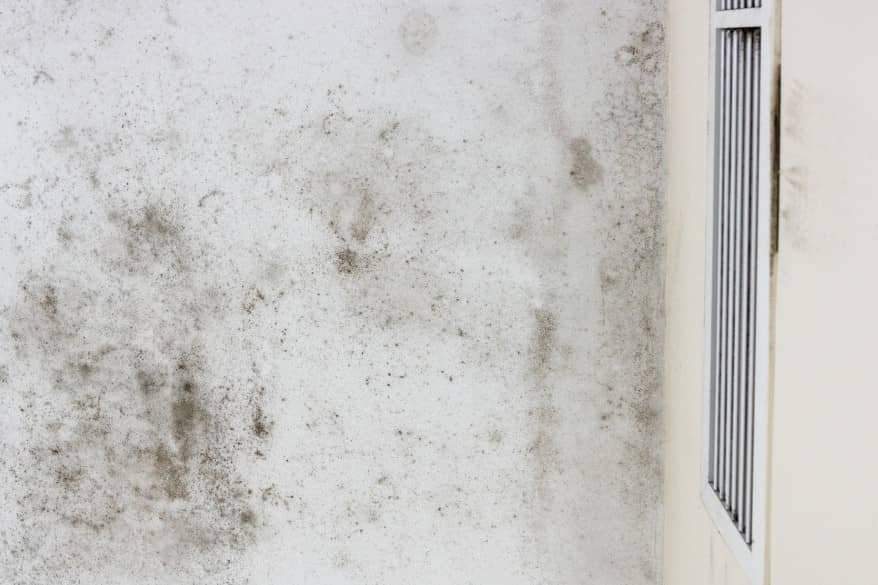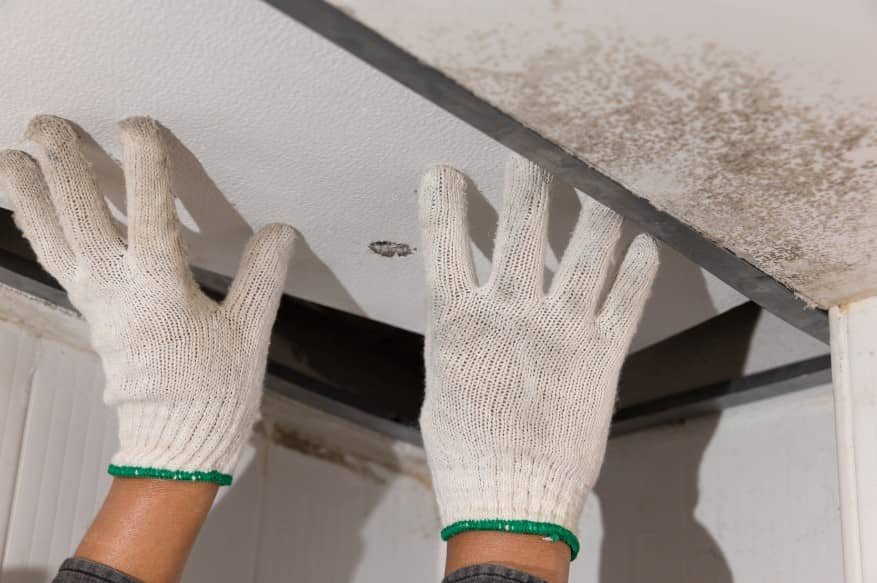Hurricane Ian caused numerous houses and businesses to experience water damage from flooding, roofs collapsing, and windows breaking. One of the most common results of this water damage is mold, which can grow within 24 to 48 hours after flood damage. You need to promptly remove all of your belongings destroyed by the hurricane as soon as possible so you don’t let mold take over your house. Mold Assessment Services is helping your protect your home from mold in Naples, Cape Coral, Fort Meyers, Sanibel, and throughout the West Coast of Florida.

In the wake of Hurricane Ian, many homes have been left vulnerable to mold growth due to extensive water damage. The health implications of mold exposure are significant, particularly for individuals with respiratory conditions. It’s critical to understand how to protect children from mold, as they are more susceptible to its harmful effects. Mold remediation steps should be taken promptly to mitigate these risks.
Am I at a High Risk of Mold Exposure After Hurricane Ian?
Mold can grow in damp, dark places such as basements and attics. It can also grow on wood, drywall, carpeting, and clothing.
People who inhale mold spores can experience coughing, wheezing, and shortness of breath. In severe cases, mold exposure can cause asthma attacks, allergic reactions, respiratory infections, and even death.
You may be exposed to molds and other hazards when returning to water-damaged homes after a disaster. The Centers for Disease Control (CDC) recommends that people with weakened immune systems avoid cleaning up mold. Hiring a professional restoration company with experience cleaning up after Hurricane Ian is recommended if you have a weakened immune system.

Effective cleaning of mold requires identifying high-risk areas and employing proper techniques to eliminate mold spores. Mold Assessment and Testing Services are essential in determining the extent of mold infestation and formulating a remediation plan. The importance of professional mold cleanup cannot be overstated, as DIY methods may not be sufficient in severe cases. Preventative measures for mold growth, including maintaining low humidity levels and regular inspections, are crucial for long-term safety.
Should I Keep Children Away From Mold?
Returning to water-damaged homes after a disaster may pose serious health threats. It’s especially true for people with preexisting respiratory conditions, pregnant women, children, older adults, and people with diseases that compromise the immune system.
Children under age five should not be allowed to participate in any cleanup activities for at least two weeks after flooding because of their increased risk of developing bacterial infections from water exposure.
What Are the Symptoms of Mold Exposure?
The symptoms of mold exposure vary depending on the person and can include irritated eyes, wheezing, a stuffy nose, or skin irritation. Some people are allergic to molds, which may result in difficulty in breathing and shortness of breath. People sensitive to mold may experience frequent colds, while some individuals may experience chronic respiratory problems.
Mold exposure can also cause fatigue, headaches, and muscle pain. High levels of mold spores may experience nausea, diarrhea, and vomiting. Some people may develop more severe symptoms like fever and swollen lymph nodes.
Those with asthma or other respiratory conditions are at an increased risk of developing health problems when exposed to mold spores.

For those affected by Hurricane Ian, Mold Assessment Services offers comprehensive services to address these challenges. If you require assistance or have concerns about mold in your home, use the provided contact information for mold remediation to get in touch with experts who can help you navigate this difficult time.
How Can I Protect My House From Mold?
Hurricane Ian has passed, and the flooding has receded, but your property can still experience issues from the storm.
Mold is not something to be taken lightly. It can be hazardous if you don’t take the proper precautions when dealing with it.
Always wear rubber gloves, goggles, and boots when cleaning areas with mold. If you plan to be inside the building for a while or clean up mold, use N95 masks (or a respirator with a higher protection level.) You can purchase it at your local home supply store.
When removing mold from porous materials like wood paneling or drywall, use an industrial-strength bleach solution such as Clorox®. Do not use chlorine bleach on colored surfaces such as carpeting or upholstery because it may permanently stain these items.
How Should I Clean Mold After Hurricane Ian?
Mold can grow on just about any surface in your home. Control of moisture in your home is the most critical factor for preventing mold growth. After Hurricane Ian, cleaning up any mold that grows on surfaces in your home is essential to your health. Cleaning mold from hard surfaces like floors and countertops will prevent secondary airborne contamination.
You can get detailed information on how to clean mold from the EPA’s website. You should also call an air duct cleaning company or a professional mover to help you move out of your home if the mold is unbearable.
Depending on the extent of mold damage, it may be possible to clean the area yourself with a commercial product or with bleach and water. But unless you have had training in mold remediation, you should use caution when cleaning up flood-damaged areas.
Note: Always read the label, especially if using an over-the-counter product.
Which Items Should I Remove From My Home?
Porous items that have been wet for more than 48 hours and cannot be thoroughly cleaned and dried can remain a source of mold. These items include leather, paper, non-cleaned clothing or linens, food, wood, and similar materials. You should remove porous items from the home to prevent potential mold growth. Use a detergent and water mixture to clean these surfaces with a sponge mop or cloth.
Homeowners may want to store their belongings outside the home while waiting for the insurance claim to file. Unfortunately, those who do not secure their items may experience theft, harm, or damage.
When homeowners suffer property loss due to a disaster, temporary storage is often needed to keep personal items safe until you can process the insurance claim.
 Mold Assessment Services is working with families in Naples, Cape Coral, Fort Meyers, Sanibel, and throughout the West Coast of Florida.
Mold Assessment Services is working with families in Naples, Cape Coral, Fort Meyers, Sanibel, and throughout the West Coast of Florida.
Affected by Hurricane Ian? Get a Free Consultation From Mold Assessment Services
Your home may be your most valuable asset. But with Hurricane Ian and similar storms wreaking havoc on homeowners, many people find that they can’t return to their homes—and even if they can get inside, they find belongings and furniture ruined by water damage, mold growth, and other issues.
Our team specializes in mold testing services for all residential properties. We provide a thorough evaluation, solutions, and cost-effective approaches to addressing your mold problem.
Don’t let Hurricane Ian’s aftermath compromise your home’s safety. Contact Mold Assessment Services at 305-244-7379 or fill out the form for professional mold testing and remediation. Secure your home and health today!


